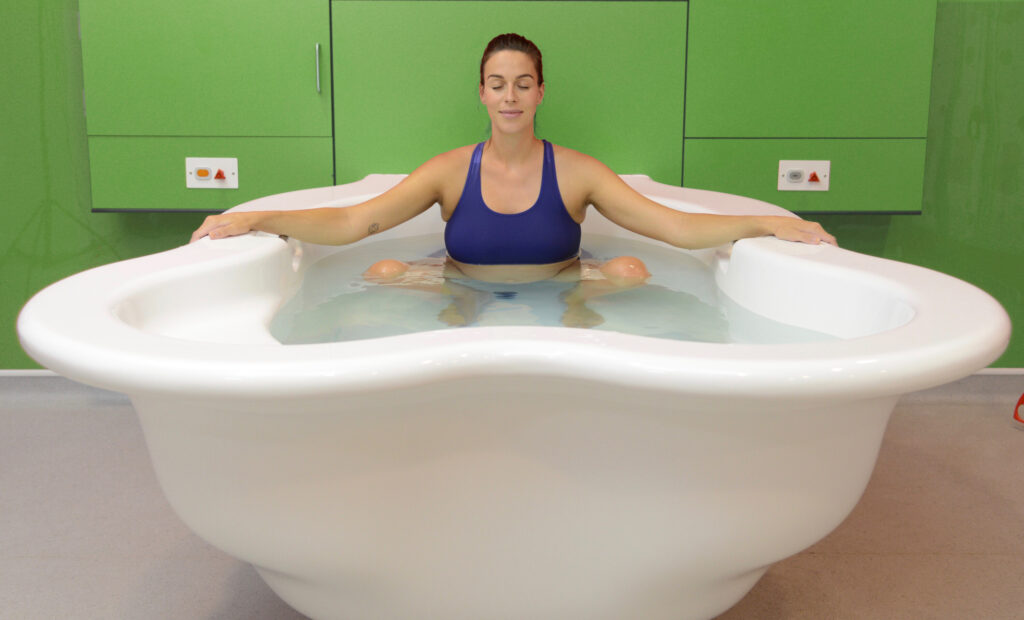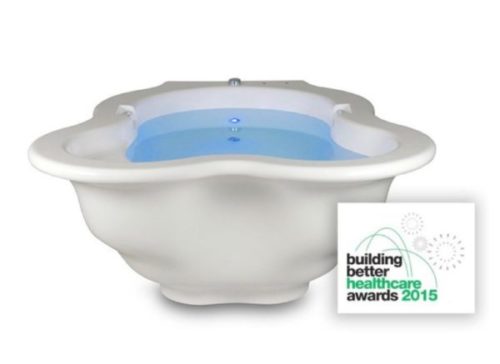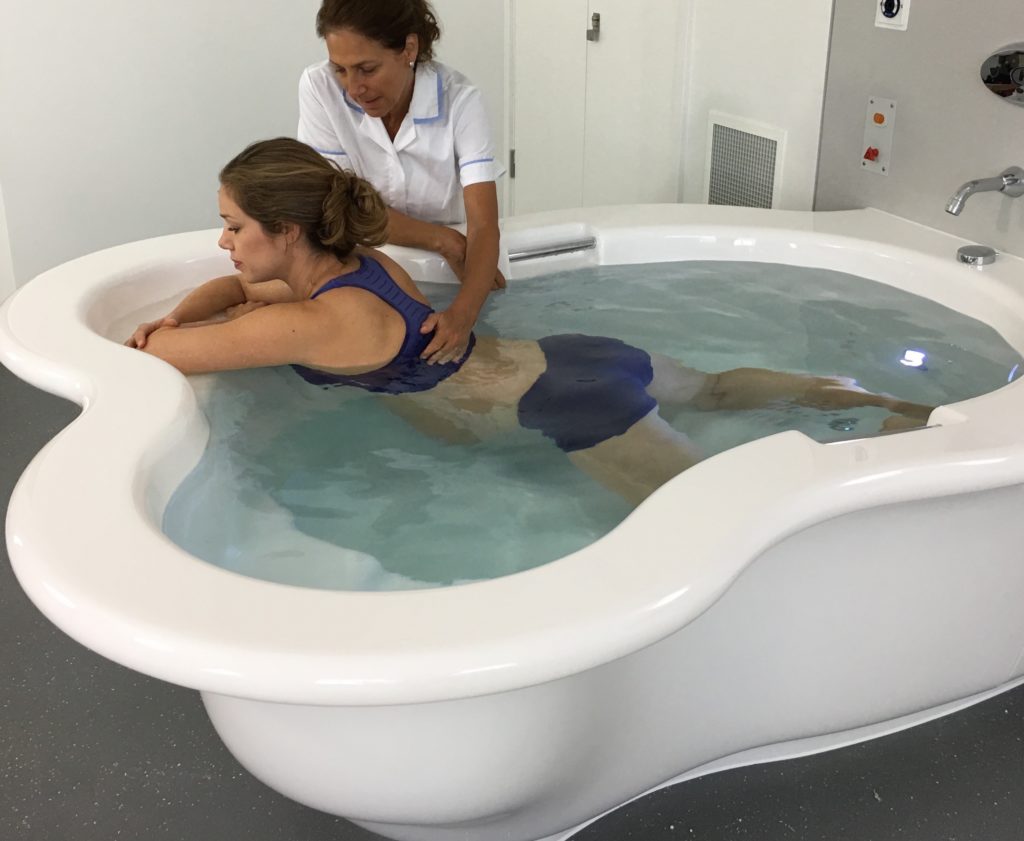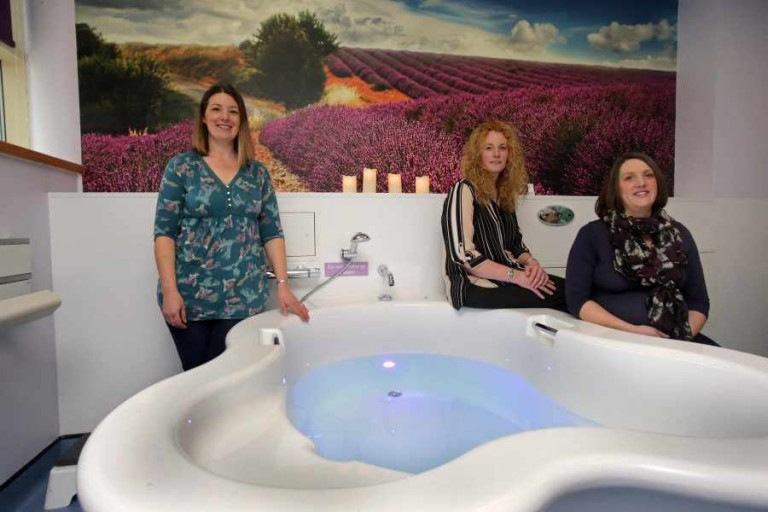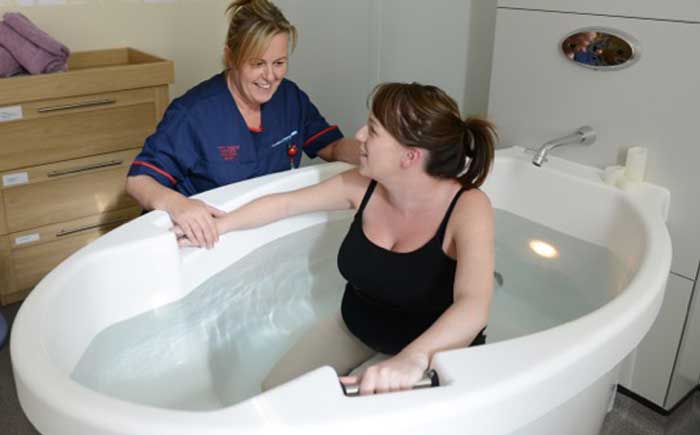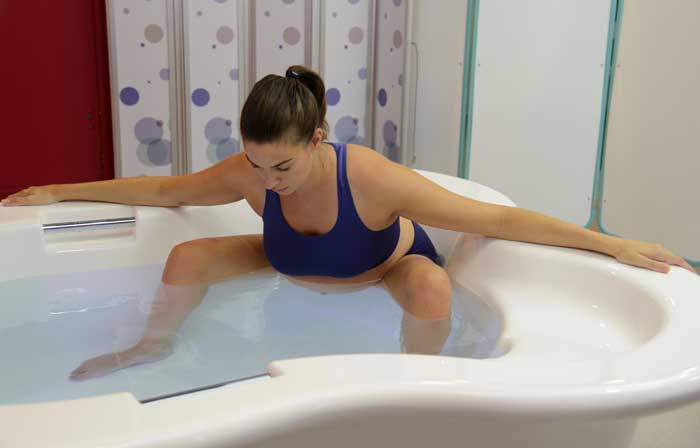Royal College of Obstetricians and Gynaecologists/Royal College of Midwives
Joint statement No.1 Immersion in water during labour and birth
Originally published: 2006
Summary
1. Both the Royal College of Obstetricians and Gynaecologists and the Royal College of Midwives support labouring in water for healthy women with uncomplicated pregnancies.
The evidence to support underwater birth is less clear but complications are seemingly rare.
If good practice guidelines are followed in relation to infection control, management of cord rupture and strict adherence to eligibility criteria, these complications should be further reduced.
Background
- Lying in warm water gives a sense of relaxation, but whether it actually reduces pain is less certain. A perception of relaxation, pain relief, ease of movements and more holistic experience made labour in water a popular choice during the 1980s. This concept has been extended to include actual birth under water following widely quoted experience from France.1 In response to public demand, the Winterton Report recommended that all maternity services provide women with the option to labour and/or give birth in water.2
- Recent surveys3 show that, of 295 UK maternity units for which data on birthing pools were available, 64% had at least one birthing pool, with 20 units having two or more. There are no current data on the number of women who actually use these facilities during labour or for water birth, apart from a postal survey carried out between April 1994 and March 1996, which reported that, at that time, fewer than 1% of births in England and Wales occurred in water.4
- Partly in response to the Winterton Report, the Royal College of Obstetricians and Gynaecologists produced a Statement on birth in water in 1994, which was updated in 20015 and the Royal College of Midwives published a Position Paper on the use of water in labour and birth in 1994 (updated in 2000).6 Both documents endorsed the use of water in labour as a choice, provided that attendants had appropriate skills and confidence to assist women who choose to labour or give birth in water.
Labouring in water
- It is important to separate the evidence on benefits and risks of immersion in water during the active phase of labour from those of actual birth in water.
- There are considerable perceived benefits of using immersion in water during labour, including less painful contractions and less need for pharmacological analgesia, shorter labour, less need for augmentation, with no known adverse effects for the woman herself.However, there may be rare but clinically significant risks for the baby born under water. These include respiratory problems (including the possibility of fresh water drowning), cord rupture with haemorrhage, and waterborne infections.
- A Cochrane review by Cluett et al.7 provides the most recent evidence on water births. Overall, there was no difference found in the use of analgesia, although women allocated to immersion in water needed less epidural, spinal or paracervical analgesia. There was no significant difference in other important clinical outcomes, including duration of labour, operative delivery and perineal trauma. The same applied to the neonatal outcomes, including neonatal infection, which was rare.
- The evidence on timing of immersion into water during the first stage of labour was not robust enough to set criteria8 but early labour could be managed by mobilisation and other activities within a labour room rather than water immersion.
- Most of the available evidence, both randomised and observational, is restricted to healthy women with uncomplicated pregnancy at term, although induction of labour and previous caesarean section have been managed using water for labour and birth without reported problems.9 A randomised trial by Cluett et al.10 on women with prolonged labour found reduction in obstetric intervention following immersion in water but a higher number of babies who needed admission to the neonatal unit. Although there is clearly a need for more research, the currently available evidence does not justify discouraging women from choosing immersion in water during labour. Increasing women’s choices for analgesia and the need for maternity services to promote normality are key principles in all UK Maternity Service Framework documents and support provision of birthing pools to be made available for healthy women with uncomplicated pregnancies.11–13
Birth in water
- Informed choice on the benefits and risks of birth in water is clouded by the lack of good quality safety data. Although there is no evidence of higher perinatal mortality or admission to special care baby units (SCBUs) for birth in water,4,14,15 caution is advised because of small numbers, possible under-reporting of SCBU admission and exclusion of women who were in labour in water but gave birth conventionally after complications.
- One review identified 16 articles reporting a total of 63 neonatal complications attributable to water birth, including drowning, respiratory problems, cord avulsion and waterborne infections.16 One can argue that this anecdotal evidence is reassuring, given the thousands of women who have given birth under water in the last few decades. However, we still do not know how the low perinatal mortality and morbidity rates compare with those babies born in air.
- The respect for maternal autonomy and choice is important; however, it is important that any possible concerns for fetal and neonatal safety are made clear. Women who make an informed choice to give birth in water should be given every opportunity and assistance to do so by attendants who have appropriate experience. More research is needed on third-stage management in the pool, as there is currently no reliable evidence that can be used to inform women regarding the benefits and risks of experiencing the third stage of labour under water.
Achieving best practice
13 Both the Royal College of Obstetricians and Gynaecologists and the Royal College of Midwives believe that to achieve best practice with water birth it is necessary for
Royal College of Obstetricians and Gynaecologists and Royal College of Midwives Joint Statement No.1 2 of 5 organisations to provide systems and structures to support this service.
This means developing a service that is committed to responsive practices and ensuring that women are involved in planning their own care with information, advice and support from professionals.11–13
Inclusion and exclusion criteria
14 All healthy women with uncomplicated pregnancies at term should have the option of water birth available to them and should be able to proceed to a water birth if they wish. The written documentation of any discussion is essential.
Practice issues
- There has been much controversy over the temperature of the water of a birthing pool, with strict criteria recommending differing estimates ranging from 34 to 37 degrees Celsius17 to a Swedish study which recommended that women be encouraged to regulate the temperature of the water to suit themselves.18 Given these large discrepancies, it would be difficult to agree strict temperature restrictions. It may be of more benefit to allow women to regulate the pool temperature to their own comfort and encourage them to leave and re-enter the pool in the first stage of labour as and when they wish. Birth attendants should ensure that the ambient room temperature is comfortable for the woman and should encourage her to drink to avoid dehydration. Cord clamps should be readily available and birth attendants need to be alert to the possibility of occult cord rupture and be sensitive to any undue tension on the cord.16
- Monitoring of the fetal heart using underwater Doppler should be standard practice, as stated in the current National Institute for Health and Clinical Excellence guidelines.19 If there are any concerns about maternal or fetal wellbeing, the woman should be advised to leave the birthing pool and an opinion from an obstetrician or other suitably qualified person should be sought in the usual manner. There needs to be a locally agreed procedure for getting a woman out of the pool, should she become compromised, and all staff likely to be caring for the woman in the room must be familiar with the procedure and should practice it regularly in emergency drills.
- If the woman raises herself out of the water and exposes the fetal head to air, once the presenting part is visible, she should be advised to remain out of the water to avoid the risk of premature gasping under water.
- All birthing pools and other equipment (such as mirrors and thermometers) should be disposed of or thoroughly cleaned and dried after every use, in accordance with local infection control policies. Disposable sieves should be made available to ensure that the pool remains free from maternal faeces and other debris. Local information and guidelines regarding prevention of legionella build up in water supply from seldomly used pools should be obtained from local NHS trust estates and should be adhered to. Midwives should use universal precautions and follow local trust infection control guidelines.
Education, skills and training
19 Midwives should discuss antenatally the use of immersion in water in labour with all women in a low-risk category, as part of their overall discussions regarding options for pain relief, and information leaflets should be available. It is important that information on water birth is conveyed to all women in a form they can understand and in a culturally sensitive fashion, to ensure parity of access to quality services.
Royal College of Obstetricians and Gynaecologists and Royal College of Midwives Joint Statement No.1 3 of 5
- All midwives should ensure that they are competent to care for a woman who wishes to have a water birth and have a good understanding of the basic principles of caring for a woman in labour, and should make themselves aware of local policies and guidelines. Apart from emergency drills, training should also include emergency management of cord rupture at birth.20
- Midwives, managers and supervisors of midwives should ensure that training in caring for a woman who wishes to have a water birth is undertaken by midwives who undertake intrapartum care, in order to increase choice for women and promote normality and ensure quality care.11,21,22
Audit
- The use of birthing pools for labour and birth should be audited carefully. Data should be kept both on immersion in first stage of labour for analgesia use and separately for underwater birth. Data collected should focus on maternal wellbeing and the condition of the baby at birth, and should include usual birth outcomes, incidence of cord rupture and reasons for and rates of neonatal admission to SCBU.
- Data should also identify women who wanted a water birth but were transferred to conventional birth, including decision time to leave the pool for the birth of baby, the reasons for transferring to conventional care and the condition of mother and baby at transfer.
- Data should also be collected on women who wished to use the birthing pool but for whatever reason were unable to do so. Units should also audit ethnicity in relation to the offer of the option of water birth, to ensure that there is parity of access.
Record keeping
25 Accurate contemporaneous records should be kept, as usual. In addition, times of entering and leaving the pool should be clearly documented, including the reason for leaving the pool, if appropriate. It is important that it is recorded clearly whether the baby was born under water.
User surveys
26 User surveys of satisfaction with water birth services, including ease of access and the quality of the information given, should be carried out. Cultural acceptability needs to be reviewed to ensure equity of access and culturally sensitive services.
References
- Odent M. Birth under water. Lancet 1983;2:1476–7.
- House of Commons Health Committee. Second Report on the Maternity Services (Winterton report). London: HMSO; 1992.
- Dr Foster Good Birth Guide [www.drfoster.co.uk/home/birth2005.asp].
- Gilbert RE, Tookey PA. Perinatal mortality and morbidity among babies delivered in water: surveillance study and postal survey. BMJ 1999;319:483–7.
- Royal College of Obstetricians and Gynaecologists. Birth in Water. RCOG Statement. London: RCOG; 2001.
- Royal College of Midwives. The Use of Water in Labour and Birth. Position Paper no. 1a. London: RCM; 2000 [www.rcm.org.uk/data/info_centre/data/position_papers.htm].
- Cluett ER, Nikodem VC, McCandlish RE, Burns EE. Immersion in water in pregnancy, labour and birth. Cochrane Database Syst Rev. 2004;(2):CD000111.
- Eriksson M, Mattson L, Ladfors L. Early or late bath during the first stage of labour: a randomised study of 200 women. Midwifery 1997;13:146–8.
Royal College of Obstetricians and Gynaecologists and Royal College of Midwives Joint Statement No.1 4 of 5
- Brown L. The tide has turned: audit of water birth. Br J Midwifery 1998;6:236–43.
- Cluett ER, Pickering RM, Getliffe K, St George Saunders NJ. Randomised controlled trial of labouring in water compared with standard management of dystocia in first stage of labour. BMJ 2004;328:314.
- Department of Health. The National Service Framework for Children and Young People. Maternity Services. Standard 11. (NSF) 2004. London: Department of Health [www.dh.gov.uk/assetRoot/04/09/05/23/04090523.pdf].
- Scottish Executive. A Framework for Maternity Services in Scotland. Edinburgh: Scottish Executive; 2001 [www.scotland.gov.uk/library3/health/ffms-00.asp].
- Welsh Assembly Children’s Health and Social Care Directorate. National Service Framework for Children, Young People and Maternity Services in Wales. Cardiff: Welsh Assembly Government; 2005 [www.wales.nhs.uk/sites/documents/441/ACFD1F6.pdf].
- Woodward J, Kelly SM. A pilot study for a randomised controlled trial of water birth versus land birth. BJOG 2004;111:537–45.
- Geissbuehler V, Stein S, Eberhard J. Waterbirths compared with landbirths – an observational study of nine years. J Perinat Med 2004;32:308–14.
- Anderson T. Umbilical cords and underwater birth. Practising Midwife 2000; 3(2):12.
- Anderson T. Time to throw the waterbirth thermometers away. MIDIRS 2004;14(3):370–4.
- Geissbuehler V, Eberhard J, Lebrecht A. Waterbirth: water temperature and bathing time –mother knows best! J Paediatr Med 2002; 30:371–8.
- National Institute for Clinical Evidence. The Use of Electronic Fetal Monitoring: the useand interpretation of cardiotocography in intrapartum fetal surveillance. London: NICE; 2001 [www.nice.org.uk/pdf/efmguidelinenice.pdf].
- Grunebaum A, Chervenak FA. The baby or the bathwater: which one should be discarded? J Perinat Med 2004;32:306–7.
- Nursing and Midwifery Council. Midwives Rules and Standards. London: NMC; 2004 [www.nmc-uk.org/aFrameDisplay.aspx?DocumentID=169].
- Nursing and Midwifery Council. The NMC Code of Professional Conduct: standards for conduct, performance and ethics. London: NMC: 2004 [www.nmc- uk.org/aFramedisplay.aspx?documentID=201]


